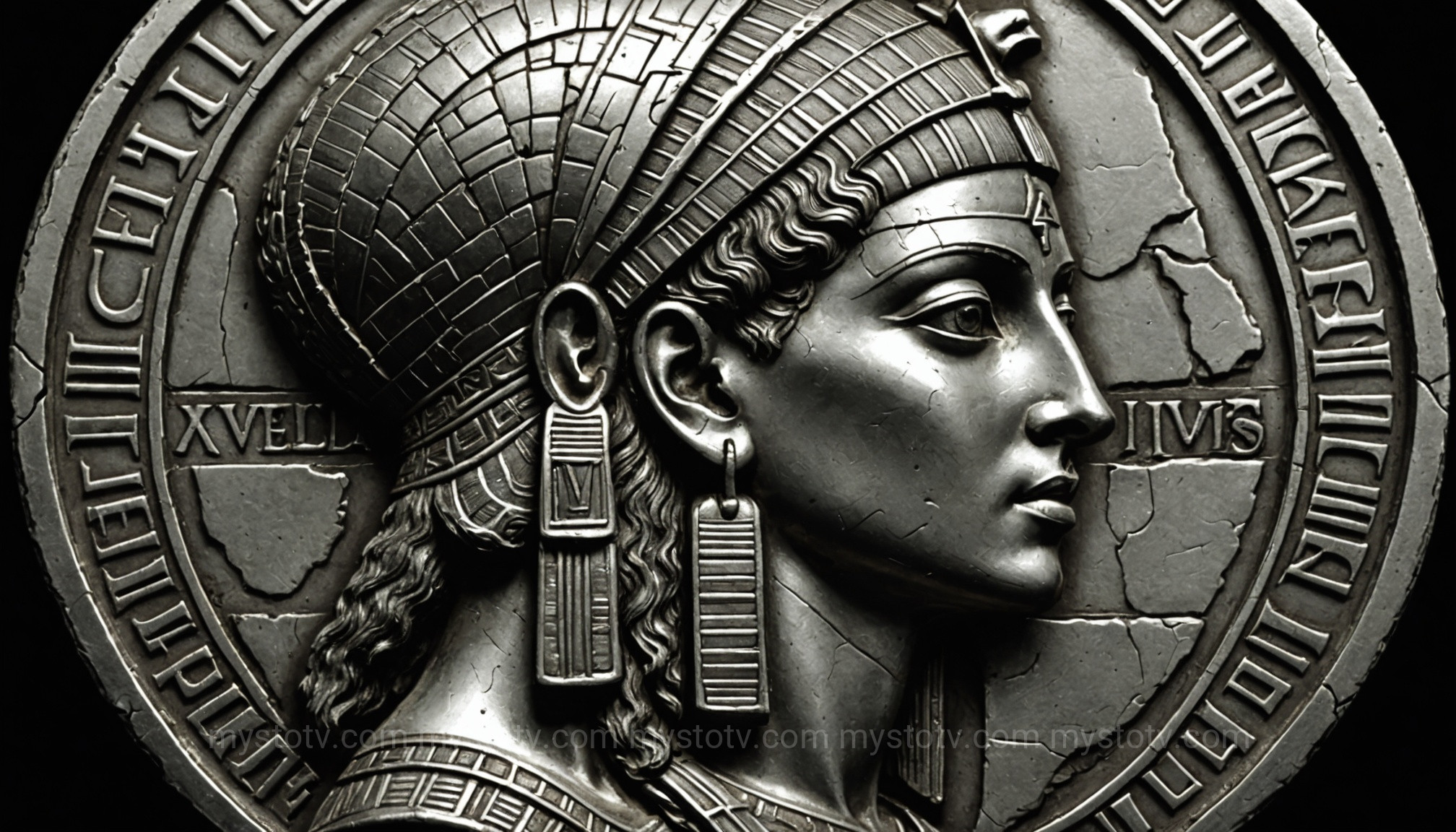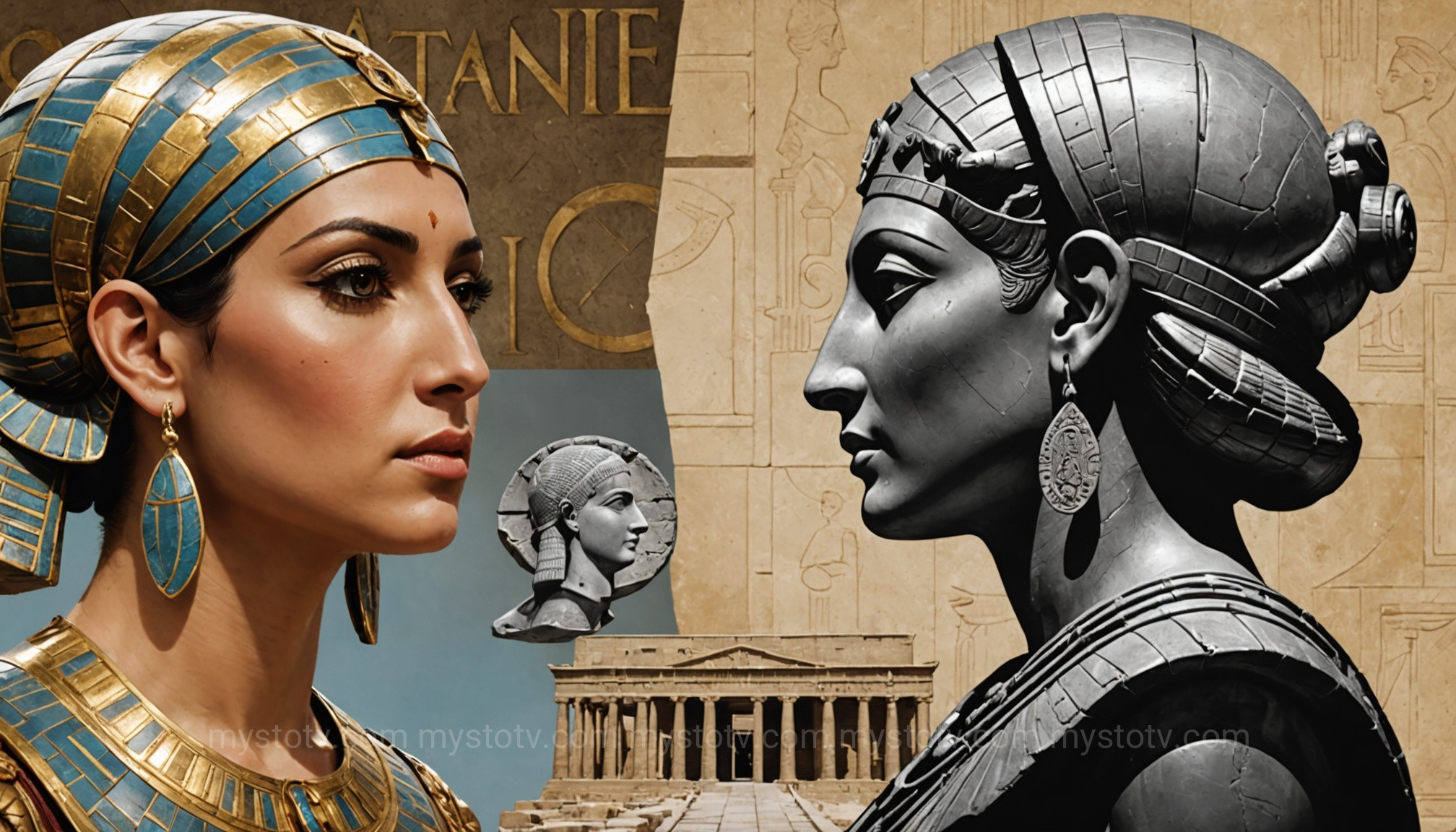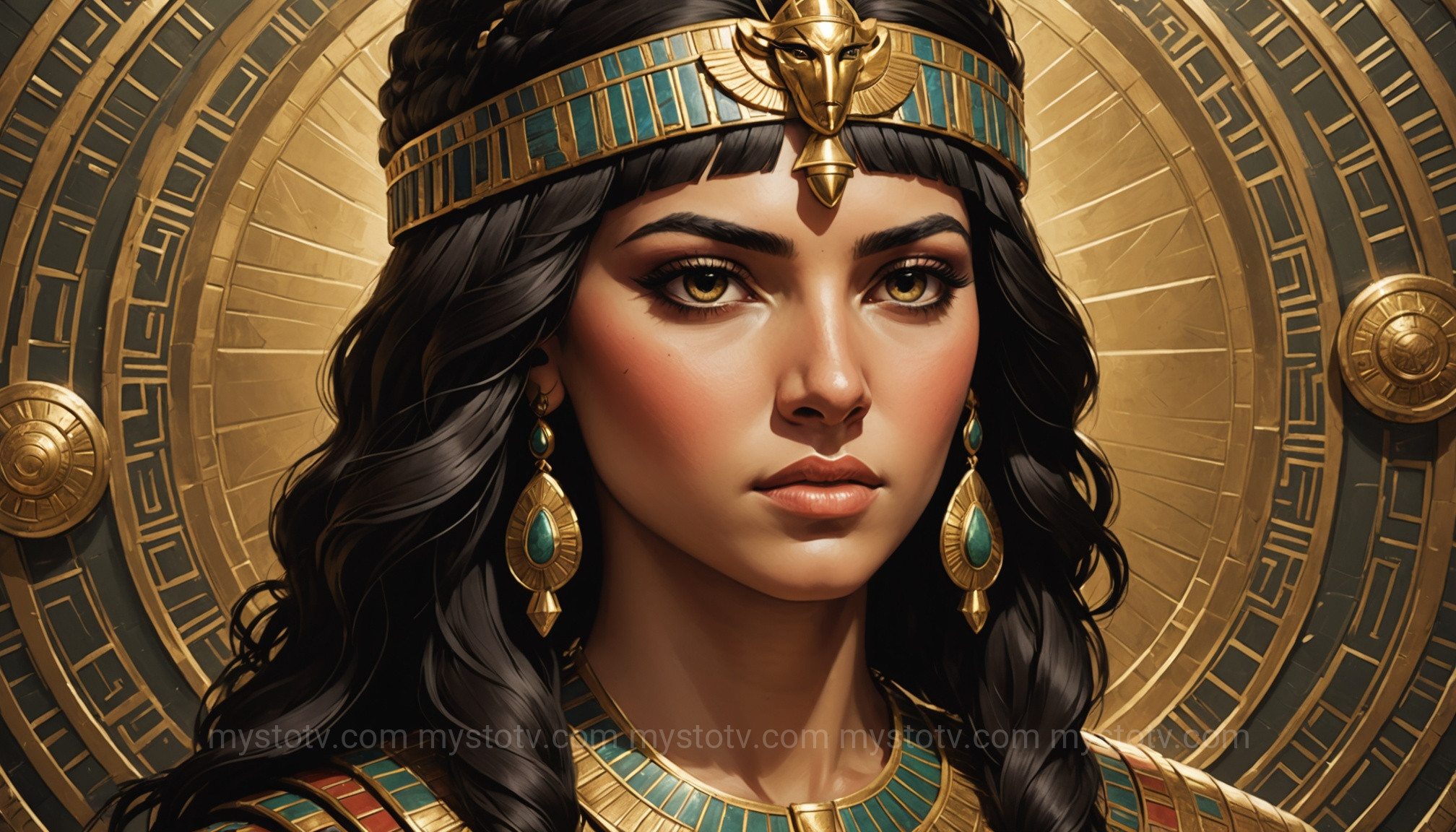I remember my first real encounter with Cleopatra wasn't in a history book, but watching the 1963 epic with Elizabeth Taylor. The dazzling jewels, the perfect black bob, the kohl-rimmed violet eyes—that was Cleopatra to me. For years, that image was cemented in my mind. It wasn't until I stumbled upon a museum exhibit featuring ancient Roman and Ptolemaic coins that the illusion shattered. Staring at the small, silver disc, the face I saw was… different. Strong, sharp, and undeniably powerful, but not the Hollywood siren I expected. That moment sparked a deep curiosity and a personal quest to understand what did Cleopatra look like, truly? It's a question that peels back layers of myth, propaganda, and modern fantasy to get to a much more fascinating truth, a truth we can now explore with the help of ancient artifacts and cutting-edge AI.
Contents
- 1 The Hollywood Myth vs. Historical Reality: Why We Ask 'What Did Cleopatra Look Like?'
- 2 Decoding the Primary Evidence: What Did Cleopatra Look Like on Ancient Coins?
- 3 Beyond the Coins: What Do Written Accounts Reveal About What Did Cleopatra Look Like?
- 4 The AI Revolution: Using Technology to Reconstruct What Did Cleopatra Look Like?
- 5 The Synthesis: A Modern, Evidence-Based Vision of What Did Cleopatra Look Like?
- 6 Frequently Asked Questions (FAQ)
- 7 References
- 8 Conclusion: The Face of a Legacy
The Hollywood Myth vs. Historical Reality: Why We Ask 'What Did Cleopatra Look Like?'
The image of Cleopatra VII Philopator is one of the most recognizable in popular culture, yet it is almost entirely a modern invention. When we try to answer the question of what did Cleopatra look like, we are not just inquiring about physical features; we are confronting two millennia of storytelling, propaganda, and cultural projection. The face we think we know is often a reflection of our own era's ideals of beauty and power, rather than an accurate representation of the historical queen of Ptolemaic Egypt.
The Enduring Power of the Hollywood Queen
From Theda Bara's vamp in 1917 to Elizabeth Taylor's iconic portrayal and Gal Gadot's upcoming role, Hollywood has consistently presented Cleopatra as a peerless beauty and an exotic seductress. This image serves a cinematic purpose: it simplifies her complex political maneuvering into a narrative of using beauty to bewitch powerful Roman men like Julius Caesar and Mark Antony. This depiction, however, has very little basis in the primary historical sources we have. It’s a powerful fiction that has overshadowed the more complex reality of a shrewd, intelligent, and multilingual ruler who commanded armies and navies and held her kingdom together against the might of Rome for over two decades.
Separating Fact from Fiction About Her Appearance
To move beyond the myth, we must critically examine the evidence. The historical quest to discover what Cleopatra looked like requires us to discard the cinematic fantasy and turn to more reliable, if more challenging, sources. These include contemporary coinage minted under her rule, a few surviving marble busts (whose identifications are often debated), and the written accounts of ancient historians, primarily Roman ones who were her political adversaries. Each piece of evidence offers a clue, but also comes with its own set of biases and limitations that require careful interpretation. It's in the synthesis of these disparate sources that a more authentic, and arguably more compelling, picture of the last pharaoh of Egypt begins to emerge.
Decoding the Primary Evidence: What Did Cleopatra Look Like on Ancient Coins?

Perhaps the most direct and contemporary evidence we have for understanding what did Cleopatra look like comes from the portraits she herself approved: those on the coins minted during her reign. Unlike idealized sculptures that might be commissioned later, coins were a powerful tool for mass communication and political propaganda in the ancient world. They projected an image of power, legitimacy, and divine right across her kingdom and beyond. Therefore, the face on her coins is the face she wanted her subjects and rivals to see.
The Politics of Portraiture on Ptolemaic Coins
Ancient rulers did not use coins for photorealistic portraits in the modern sense. The imagery was carefully curated to convey a message. For Cleopatra, this meant emphasizing her heritage and strength. Her portraits on silver tetradrachms show her with features that align with her Ptolemaic Greek ancestors, not an idealized Egyptian beauty. The features are strong, almost severe, projecting an image of an authoritative and unyielding monarch. This was a deliberate choice to assert her legitimacy in a male-dominated world and to connect her rule to the powerful dynasty founded by Alexander the Great's general, Ptolemy I Soter.
Analyzing the Key Features: Nose, Chin, and Eyes
Consistently across various coin issues, particularly those minted with her Roman partner Mark Antony, Cleopatra's profile is striking. The key features include:
-
- A Prominent, Aquiline Nose: This is perhaps the most famous and consistent feature. The hooked nose was a characteristic seen on portraits of her father, Ptolemy XII, and was a clear dynastic marker.
-
A Strong Chin and Jawline:
-
- Her portraits display a firm, protruding chin and a powerful jaw, suggesting determination and authority. -
Large, Watchful Eyes:
-
- The eyes on her coins are typically large and wide, a common feature in Hellenistic royal portraiture, meant to convey vigilance and an almost divine presence. -
A Slender Neck:
- Many coins depict her with a long, slender neck, often adorned with pearls, indicating grace and royalty.
Taken together, these features do not create the face of a delicate Hollywood starlet. Instead, they form the portrait of a formidable Hellenistic ruler, one whose image was designed to command respect, not simply to charm.
Interpreting the Numismatic Evidence
While the coins are invaluable, we must interpret them with caution. The portraits are symbolic and were likely exaggerated to emphasize dynastic traits. The crude nature of some provincial mints could also lead to less-than-flattering depictions. However, the consistency of the main features—the nose, the chin, the overall powerful demeanor—across different mints and years provides a strong foundation for any reconstruction. The coins tell us that, at the very least, Cleopatra projected an image of strength and heritage, a far cry from the purely seductive narrative of later lore. This numismatic evidence is the bedrock for any serious discussion of what did Cleopatra look like.
Beyond the Coins: What Do Written Accounts Reveal About What Did Cleopatra Look Like?
While coins provide a visual snapshot, written descriptions from ancient historians offer another crucial layer to the puzzle of what did Cleopatra look like. These accounts, however, are not without their own significant biases. Most were written by Romans, decades after her death, and often as part of a political narrative that sought to vilify her and legitimize Augustus's rise to power. Despite this, they provide invaluable insights, often focusing on qualities that the coins cannot show.
Plutarch's Description: Charm Over Conventional Beauty
The most famous and influential account comes from the Greek biographer Plutarch, writing in his Life of Antony over a century after Cleopatra’s death. His description is perhaps the most surprising to those familiar with the Hollywood myth. He states:
“For her beauty, as we are told, was in itself not altogether incomparable, nor such as to strike those who saw her; but converse with her had an irresistible charm, and her presence, combined with the persuasiveness of her discourse and the character that was somehow diffused about her behaviour towards others, had something stimulating about it.”
Plutarch's analysis is revolutionary. He directly downplays her physical beauty, suggesting it was not her most remarkable feature. Instead, he emphasizes her charisma, her intelligence, and the captivating power of her voice and conversation. He mentions she could speak numerous languages fluently, a testament to her intellect. This shifts the focus from her face to her force of personality. According to Plutarch, her true power lay not in a perfect appearance, but in her wit, her charm, and her brilliant mind. This primary evidence from coins and texts forms the basis for any modern reconstruction.
Roman Propaganda and Its Influence
Other Roman writers like Cassius Dio and Horace were less nuanced. Often writing as part of the Augustan propaganda machine, they painted Cleopatra as a decadent, manipulative, and "fatal monster." Their descriptions are colored by xenophobia and misogyny, aiming to portray her as a dangerous foreign temptress who corrupted noble Roman men. They rarely offer detailed physical descriptions, focusing instead on her perceived moral and character flaws. This context is essential; these were not objective historical reports but politically motivated attacks. They tell us less about what Cleopatra actually looked like and more about how Rome wanted her to be remembered: as a dangerous 'other' who justified their war against her.
The AI Revolution: Using Technology to Reconstruct What Did Cleopatra Look Like?

After sifting through biased texts and symbolic coins, the question remains: can we truly visualize her face? This is where modern technology offers an exciting, though speculative, new chapter in the quest to determine what did Cleopatra look like. Artificial intelligence, specifically generative AI and 3D modeling software, allows historians and artists to synthesize the available evidence into a single, lifelike reconstruction.
The Process of AI-Assisted Facial Reconstruction
Creating an AI reconstruction of a historical figure is not as simple as pushing a button. It's a meticulous process that blends art, history, and computer science. 1. Data Aggregation: The process begins by feeding the AI with all available visual and descriptive data. This includes high-resolution scans of her coin portraits, 3D models of potential sculptures (like the "Berlin Cleopatra" and "Vatican Cleopatra" busts), and data on the typical physiognomy of Macedonian Greeks. 2. Interpreting Descriptions: The written accounts are also factored in. While Plutarch doesn't describe her face, his emphasis on her charisma and stimulating presence can guide the artist in creating an expression that conveys intelligence rather than just passive beauty. 3. Algorithmic Synthesis: The AI algorithm then works to find common patterns and create a base model that reconciles the different sources. It can average the profiles from dozens of coins to create a more reliable composite, smoothing out the inconsistencies of individual mints. 4. Artistic Refinement: The final, and perhaps most crucial, step is human intervention. A digital artist or historian refines the AI's output, making informed decisions about skin tone (likely olive, typical of Mediterranean peoples), hair color and texture, and eye color. This stage is inherently subjective but is guided by historical and anthropological evidence.
Limitations and the Role of Interpretation
It is vital to understand that an AI-generated face of Cleopatra is not a photograph. It is an educated guess—a hypothesis in visual form. The output is entirely dependent on the quality of the input data and the interpretations of the person guiding the process. If the primary evidence is a stylized coin, the AI will produce a face based on that stylization. The result is a plausible reconstruction, not a definitive portrait. It represents one possible way she could have looked, based on the clues she left behind. Despite these limitations, the process is incredibly valuable. It forces us to engage directly with the evidence and translates abstract data points into a tangible face, making the historical figure feel more real and immediate.
The Synthesis: A Modern, Evidence-Based Vision of What Did Cleopatra Look Like?

So, after examining the coins, parsing the ancient texts, and harnessing the power of AI, what did Cleopatra look like? By weaving together all these threads of evidence, we can assemble a portrait that is far more complex and compelling than any Hollywood fantasy. This evidence-based vision replaces the one-dimensional seductress with a multifaceted woman of power, intellect, and distinct heritage.
The reconstructed Cleopatra is not the ethereally beautiful Elizabeth Taylor. She is a woman of Macedonian-Greek descent, whose family had lived in Egypt for nearly 300 years. Her appearance would have reflected this Hellenistic heritage. Key features would include:
- Skin and Hair: She likely had olive skin, common in the Mediterranean, and dark brown or black hair, styled in the fashionable and complex "melon coiffure" of the era, not a sharp 1960s bob.
- Facial Structure: Her face was defined by the strong features seen on her coins. A prominent, slightly hooked nose, a determined chin, high cheekbones, and a relatively thin-lipped mouth. Her face was one of character and strength, not delicate symmetry.
- Physique: While we have little evidence of her body type, as a member of the notoriously decadent Ptolemaic dynasty, it's unlikely she was waif-thin. Roman propaganda often portrayed her as indulgent, though this is likely an exaggeration.
Crucially, this reconstruction aligns perfectly with Plutarch's account. A woman with such strong, unconventional features might not have been considered a "beauty" in the classical sense, but her animated expression, the intelligence in her eyes, and the power of her voice could create an aura of irresistible charm and authority. Her allure came from her entire presence, not just the sum of her physical parts. This vision of Cleopatra—intelligent, charismatic, and ethnically complex—is the one that the historical evidence supports.
Frequently Asked Questions (FAQ)
1. Was Cleopatra considered beautiful in her time?
This is a complex question. Based on the most direct account from Plutarch, she was not considered an incomparable beauty. He emphasized that her charm, wit, and captivating voice were her most powerful attributes. Ancient beauty standards also differed from ours. Her coin portraits, with their strong, sharp features, were designed to project power and dynastic legitimacy, not conventional prettiness. So, while she was undoubtedly charismatic and alluring, she likely was not famous for her physical beauty alone.
2. What was Cleopatra's ethnicity?
Cleopatra VII was the last ruler of the Ptolemaic dynasty, a family of Macedonian-Greek origin that ruled Egypt after the death of Alexander the Great. She was therefore primarily of Greek descent. She was also the first Ptolemaic ruler to learn the Egyptian language. While there is no definitive proof of her having Egyptian ancestry, given that her father's and grandfather's parentage is not fully documented, it is a possibility that cannot be entirely ruled out. However, the dominant and confirmed part of her heritage was Macedonian-Greek.
3. How accurate are AI reconstructions of historical figures like Cleopatra?
AI reconstructions should be viewed as "forensic art" or "educated hypotheses" rather than definitive portraits. Their accuracy is entirely dependent on the quality and interpretation of the source data. For Cleopatra, the data comes from stylized coins and debated sculptures. The AI can create a plausible synthesis of these features, but choices about skin tone, eye color, and expression are artistic interpretations guided by historical context. They are valuable for visualizing the past but are not scientific certainties.
References
- Plutarch. The Life of Antony. The Internet Classics Archive. http://classics.mit.edu/Plutarch/antony.html
- Roller, Duane W. Cleopatra: A Biography. Oxford University Press, 2010.
- Walker, Susan, and Higgs, Peter. Cleopatra of Egypt: From History to Myth. Princeton University Press, 2001. A catalogue from the British Museum exhibition.
- Cassius Dio. Roman History. Book LI. https://penelope.uchicago.edu/Thayer/E/Roman/Texts/Cassius_Dio/51*.html
Conclusion: The Face of a Legacy
The quest to discover what did Cleopatra look like ultimately reveals a truth far more profound than any simple portrait could convey. We begin by seeking a face and end by discovering a character. The journey takes us from the glitzy fantasies of Hollywood to the hard, tangible evidence of ancient coins, from biased Roman histories to the fascinating potential of artificial intelligence. The woman who emerges from the evidence is not a simple seductress, but a powerful, intelligent ruler whose most compelling features were her mind, her charisma, and her unyielding will.
The face reconstructed from history and technology—with its strong nose, determined chin, and intelligent eyes—is the face of a political strategist, a linguist, a naval commander, and the last true pharaoh of Egypt. Perhaps the enduring obsession with her appearance misses the point that Plutarch made centuries ago: her real power was never just about how she looked, but about who she was. In the end, that is a legacy far more beautiful and enduring than any physical likeness.